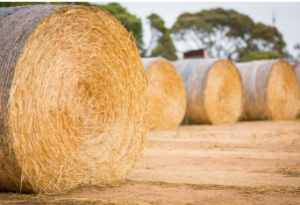The 4-H program began the initiative several years ago. This spring, the group collected about 8,000 pounds of plastic twine. The goal is to collect another 10,000 pounds over the winter. The horses, too, are happy to help. The coops can accept the plastic twine.
 You can also recycle baling twine. You can drop off your twine. Polypropylene is biodegradable and takes 50 years to degrade. If you’re concerned about the environment, you can donate used baling twine to your local agricultural cooperative or landfill. These programs will help preserve our environment. Check www.balingtwine.com.au.
You can also recycle baling twine. You can drop off your twine. Polypropylene is biodegradable and takes 50 years to degrade. If you’re concerned about the environment, you can donate used baling twine to your local agricultural cooperative or landfill. These programs will help preserve our environment. Check www.balingtwine.com.au.
Another good use for baling twine is to create a hammock. The twine is versatile enough to be used as a lead rein for your dog, but its durability and colour make it ideal for outdoor use. You can find different styles and colours of hammocks online. If you want to make one for your barn, you can easily search for instructions. Then, all you need to do is tie the two ends together.
Whether you’re looking for twine for construction, you’ll need baling twine for different purposes. You can choose from different colours for various purposes, including green, yellow, and red. It is so you can make a good choice based on the materials and weight of your materials. If you’re planning to bale your waste, be sure to choose a durable and biodegradable material for baling.
Baler twine is a staple for any farm. It is available in various colours and weights and has several practical uses. In addition to being a fence and a tool, it can also be used to fix up a fence and reattach tractor parts. There are many uses for baling twine on your farm, and they range from utilitarian to creative. You can find it at your local hardware store or a local specialised retailer.
Baling twine comes in various colours. Depending on the needs of your farm, you may need to buy a different colour. You can also choose to buy a specific type of twine that matches your tractor. Depending on the purpose of your baler, you might want to use a different type of material. Choosing a colour that matches the rest of your tractor is the best way to choose the right one for your needs.
There are many uses for baler twine. It can repair fences, reattach tractor parts, or steady fences. While it’s most commonly used for baling, it also has other uses. Its weight and colour can be used for many things, including mending fences and repairing a broken fence. However, it’s most common in baling. So, you can find it in several different types of weights and colours.
Check www.balingtwine.com.au for different types of baling twine. These products are used to bale paper, newspaper, and other recyclable materials. They are available in a variety of colours and strengths. Finding the right one for your needs, you can search for baling twine online or at a local retail store. When purchasing baling wire, you can also choose from baling twine that’s specifically designed for your farm. In addition to the various uses of baling twine.
The durability of baling twine is an important factor for farmers. Its resiliency and strength make it a good choice for cattle and other animals. However, even though it’s a natural fibre, it isn’t as durable as plastic twine, and it’s harder to clean. However, it does come in various colours and sizes, so it’s easy to find the perfect one for your operation.
Baling twine is available in several sizes. The longest baling twine is 9,000 feet long. It can be tied to the front D rings of an English saddle. The twine is placed on a special ring and ties the hay to the saddle during the baling process. The twine is usually polypropylene, which takes 50 years to decompose. The material is 100 per cent recyclable.
Earlier, the twine was made from sisal. Today, twine is made of manufactured materials. The first artificial twine was polypropylene. It had higher UV inhibitors and was more durable than sisal. The sisal twine used by farmers is resistant to rot, mildew, and rodents. The same farmers often use it as sisal bales.


